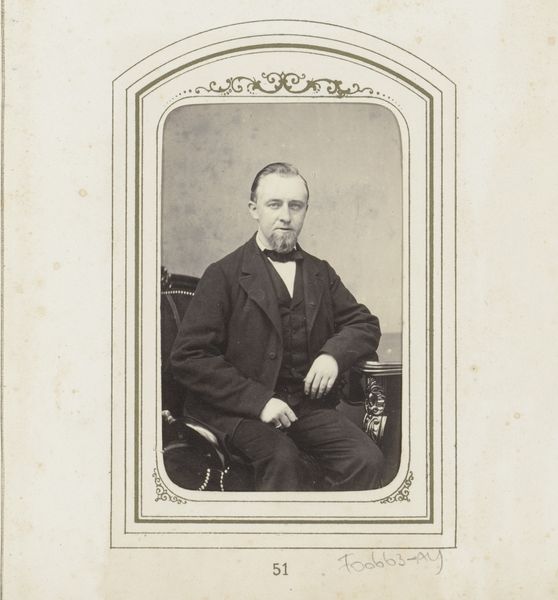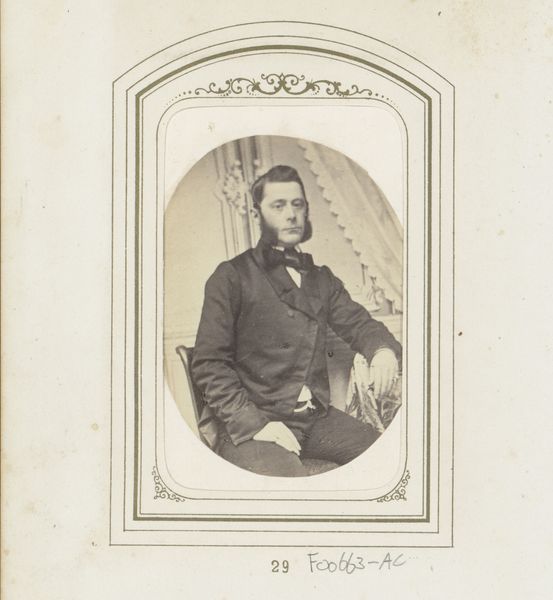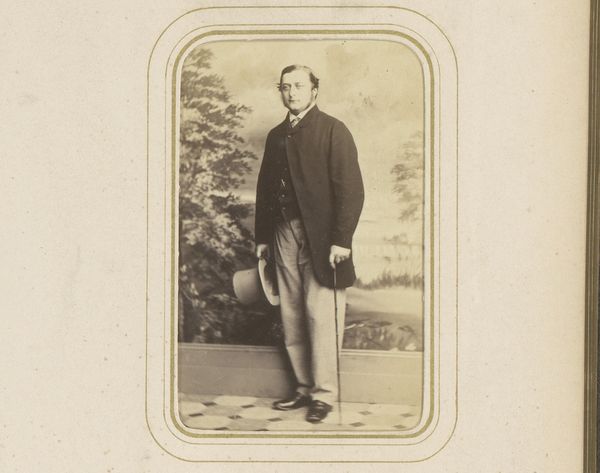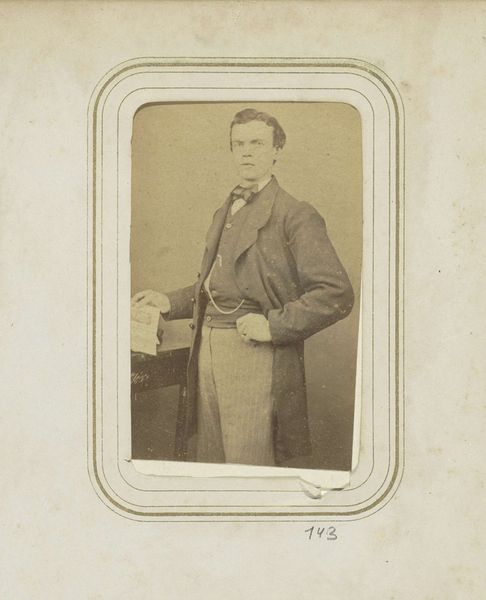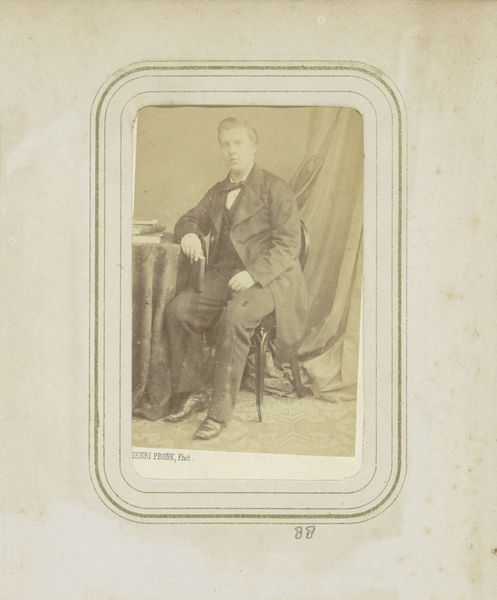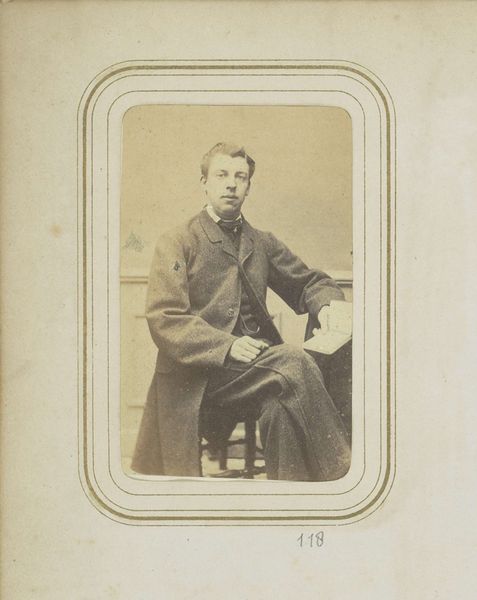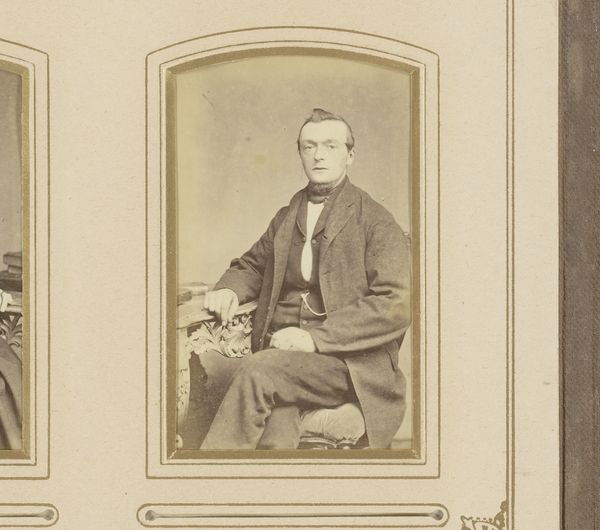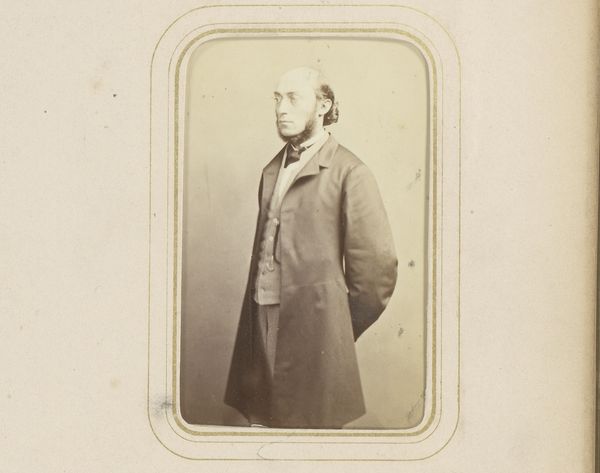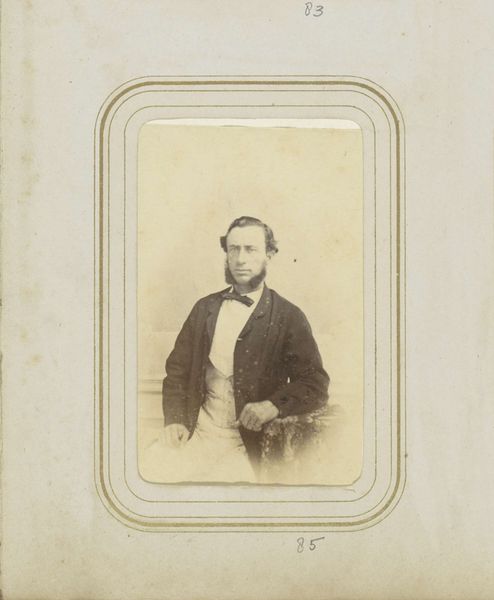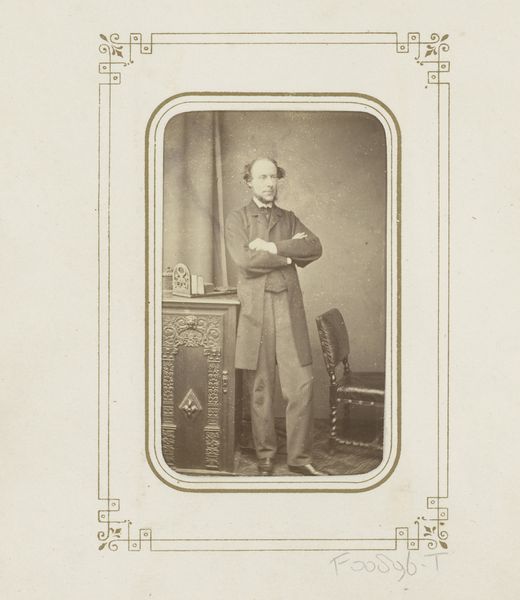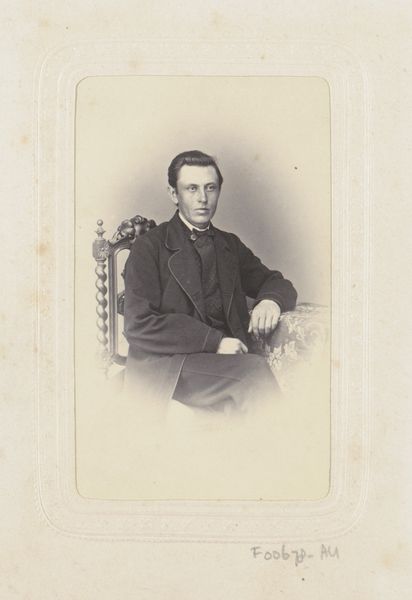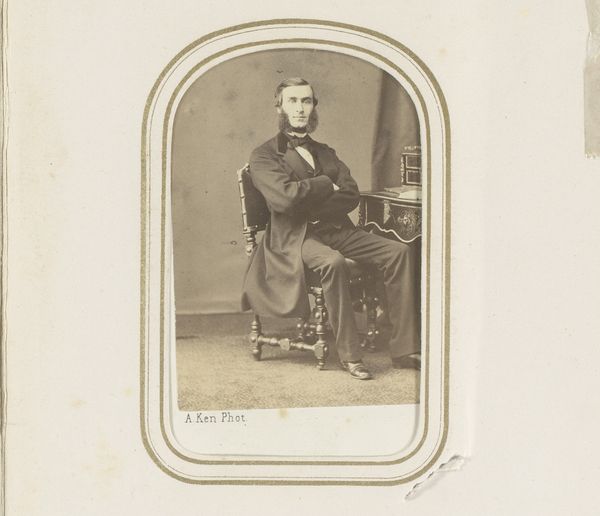
Dimensions: height 85 mm, width 53 mm
Copyright: Rijks Museum: Open Domain
Editor: This is "Portrait of a Seated Man," a daguerreotype taken sometime between 1860 and 1880 by Eduard Fuchs. There's a stillness to this image, almost a weightiness despite its small size. The sepia tones really add to that sense of history. What do you see in this portrait? Curator: I see a carefully constructed identity. Note the man’s posture: upright, legs crossed, conveying control. But his gaze...it's not confrontational, more questioning. The beard, a deliberate choice in that era, symbolizes masculinity and perhaps even wisdom. He is placing himself within the visual vocabulary of success. Do you think that's just an accidental decision by him? Editor: Not at all! It feels very intentional, a deliberate performance for the camera. So, is he playing with those symbols consciously? Curator: Undoubtedly. Photography, still relatively new, was about crafting a persona. Each element--the cut of his coat, the style of his beard, even the framing around the image—speaks to aspirations. He's using symbols to tell us a story he wants us to believe about who he is. Editor: So, this portrait becomes a cultural artifact, telling us less about the individual and more about the values he wanted to project. That's fascinating! I never considered the psychology of portraiture that way. Curator: Precisely. The image captures not just a likeness, but a carefully considered message about status, intellect, and belonging. We gain insights into not just him, but the broader societal codes he lived by. Editor: This portrait definitely gives a glimpse into the visual language of that time. Thank you for expanding my view.
Comments
No comments
Be the first to comment and join the conversation on the ultimate creative platform.
